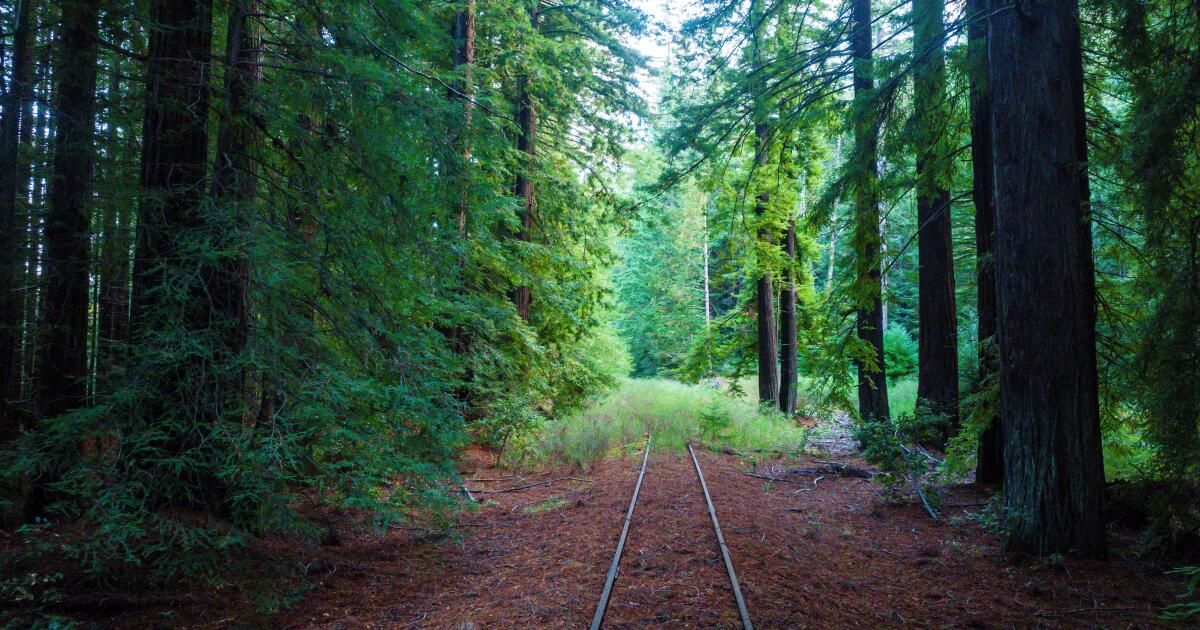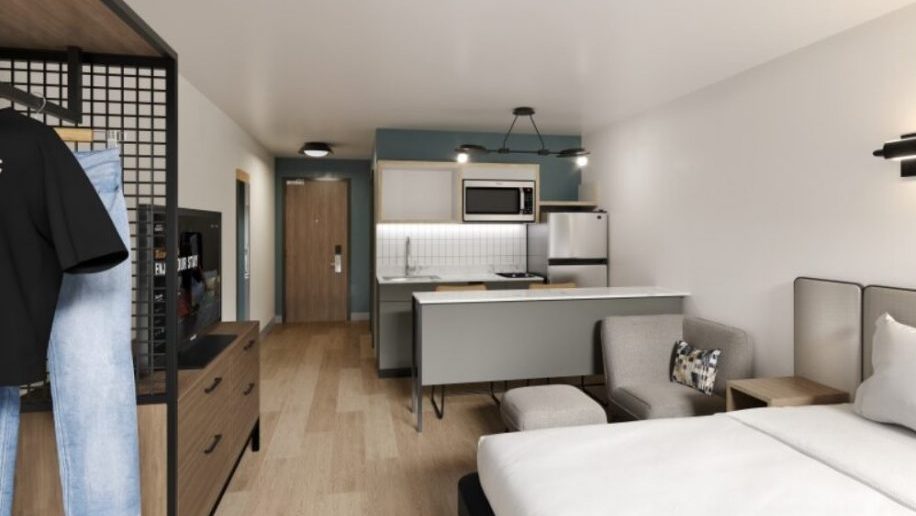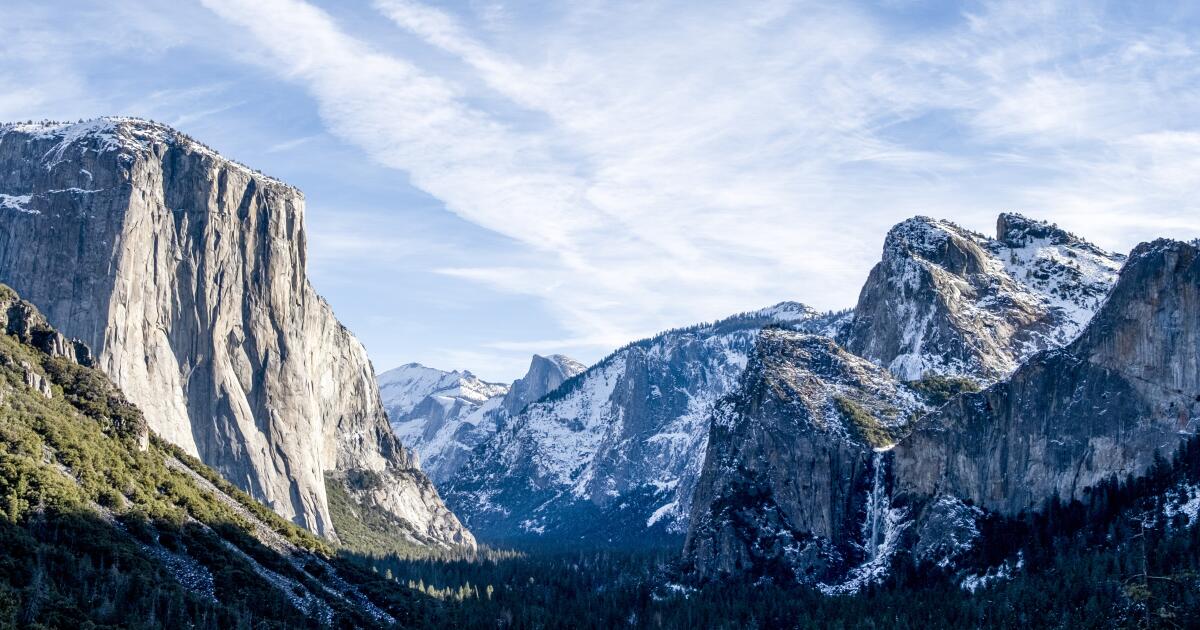More than a century ago, a railroad was built to transport passengers and redwood logs between San Francisco and Humboldt Bay.
Now, the since-abandoned railroad track could be transformed into a 307-mile path through remote, wilderness territory along California's northern coast, a move advocates hope will create an outdoor destination for world class and will reactivate the economy.
The Great Redwood Trail moved closer to completion this week with the release of a document outlining the planning, construction and management of the trail in Mendocino, Trinity and Humboldt counties, or the northern portion of the planned trail. Segments in Sonoma and Marin counties will be planned separately.
“I would put it in the category of the Pacific Crest Trail, the Appalachian Trail — these large landscape-scale trails that give people the experience of seeing areas they would never otherwise have access to,” said Caryl Hart, chairwoman of the Commission. Coastal Californian and board member of the Great Redwood Trail Agency, which is tasked with developing the trail.
If realized, the project would be the longest so-called rail trail in the country, generally following the extinct track through towering redwoods and along rushing rivers teeming with salmon. The relatively flat trail would accommodate hikers, bikers and horseback riders while potentially providing an economic shot in the arm to small towns struggling amid declining logging and the rise of legal cannabis.
Officials say completion is probably 20 years away, but they will move forward section by section. Tribes are being consulted to guide the project, officials said, but some have claimed they are being sidelined.
If completed in its entirety, the Great Redwood Trail would stretch more than 300 miles.
(Great Redwood Trail Agency)
Hart said there is currently no way to conduct a continuous hike through vast expanses of coast redwoods, the tallest trees on Earth.
“And that's what this is going to provide, where you can be in the forest for long periods of time,” he said, “and it's really a magical, spiritual experience.”
The seeds of the vision date back to the 1980s, when the Pacific Northwest Railroad was struggling to stay afloat. Local advocates began thinking about turning the problematic line into a trail, said Steve Madrone, board vice president of the Great Redwood Trail Agency, then a member of the Blue Lake City Council who was among those pushing the concept.
The state tried to shore up the railroad, but in 1998 federal officials ordered it closed for safety reasons. As hopes of restoring it faded, enthusiasm for developing the trail increased. In 2018, a law was passed recognizing that the corridor could become a long-distance trail. About three years later, the Great Redwood Trail Agency was created to guide the transition of the 231-mile northern leg.
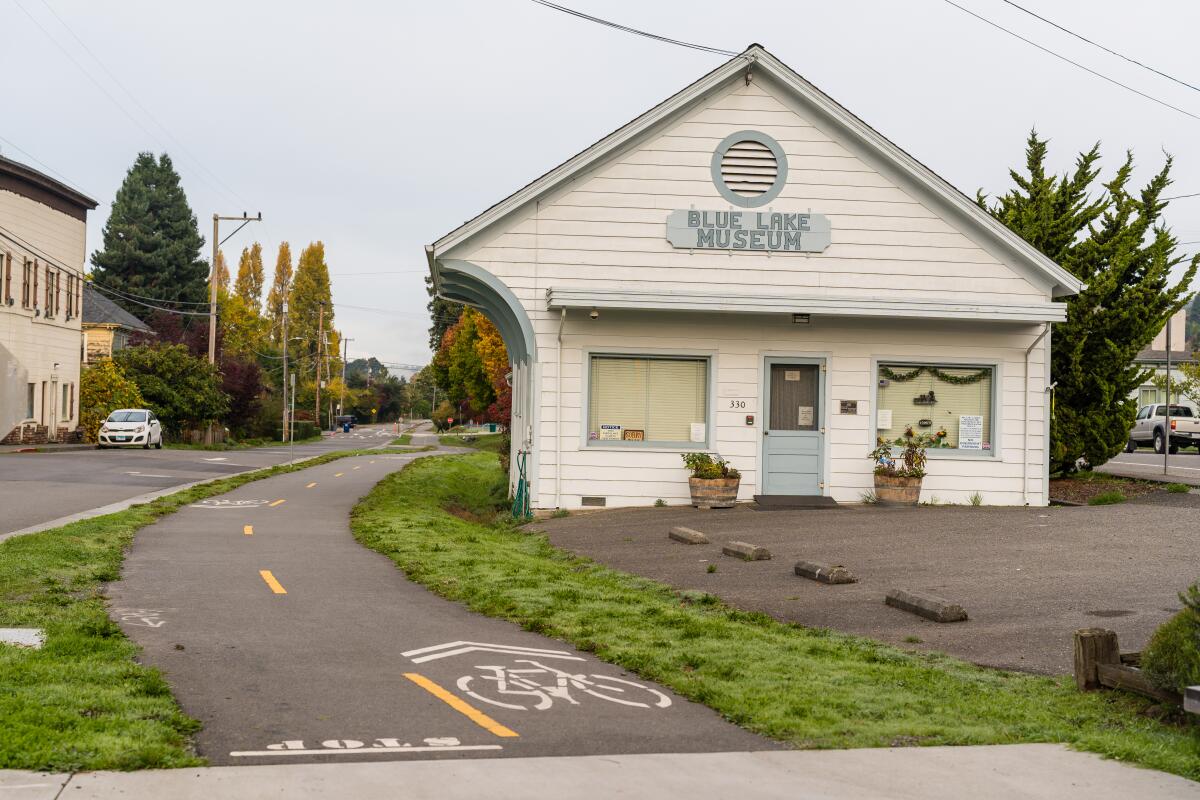
Blue Lake is one of the areas where the trail is currently open to the public.
(Great Redwood Trail Agency)
Most of the trail is still just a dream, but there are some walkable segments in Ukiah, Eureka, Arcata, and Blue Lake. The more than 500-page master plan identifies 40 segments on the North Shore and ranks them based on feasibility, impact and readiness. Sonoma-Marin Area Rail Transit, or SMART, is overseeing the southern portion of the project, where the path will primarily follow a commuter rail line.
What's generating particular excitement among planners is the prospect of opening the Eel River Canyon, abutting the nearly 200-mile Eel River, which runs along the northwest coast not far from the Pacific Ocean. While it meanders through some major population centers, it is relatively unknown due to inaccessibility and lack of infrastructure, said Marin County Supervisor Mary Sackett, board chairwoman of the Great Redwood Trail Agency.
It is likely to have the highest cost of all the segments because it is remote and requires the removal of railroad debris that has washed into the river.
In addition to providing access to a natural gem, “I think this is the only opportunity we have to clean up that past history,” Sackett said.
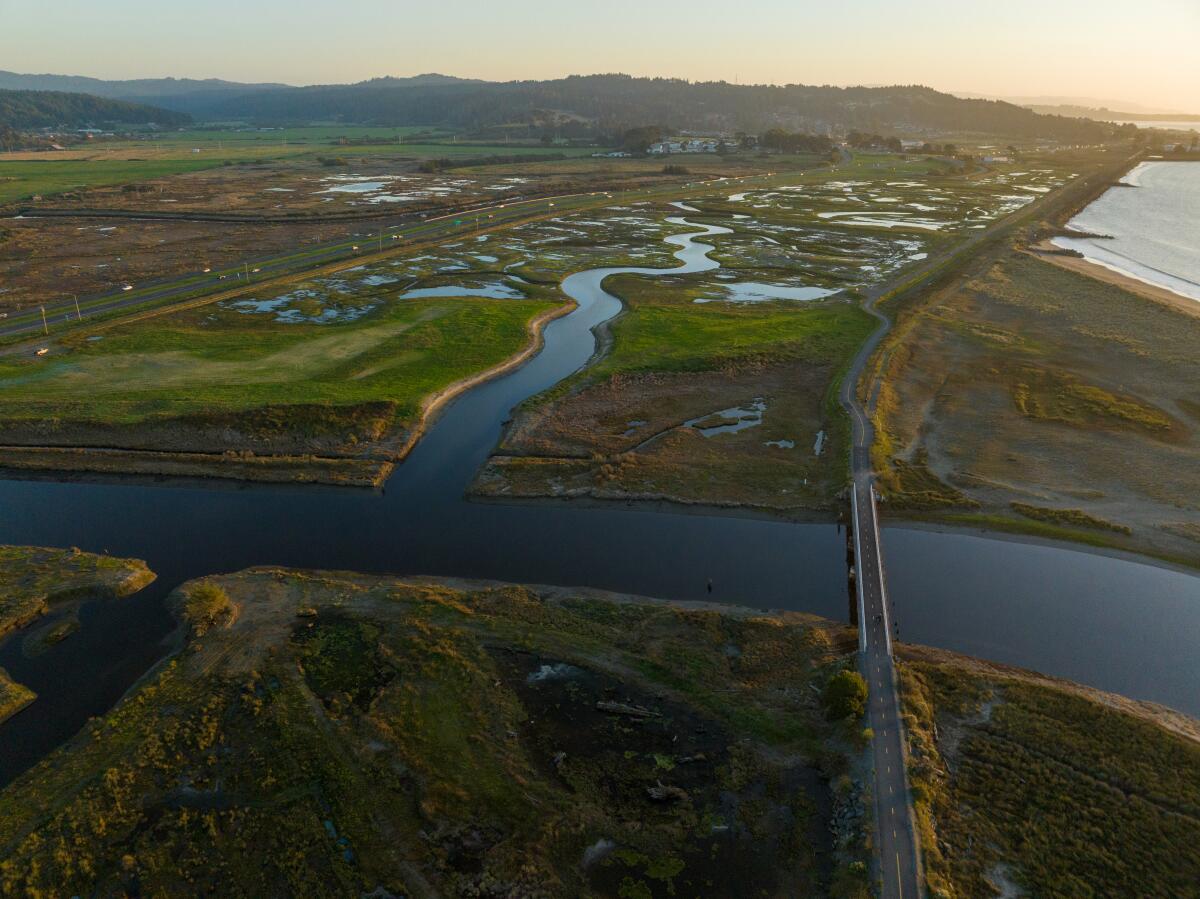
California's northern coast is known for its remote beauty.
(Great Redwood Trail Agency)
Proponents say it could also be an economic lifeline for remote villages. Planning documents estimate the trail would generate more than $102 million a year, and outsiders would eat, recreate and sleep in areas that are currently off the beaten path.
Sackett said illegal cannabis, concentrated in Humboldt, Mendocino and Trinity counties, once attracted an influx of immigrants and money, even as the industry devastated the environment. Hopes for large tax payments from legal crops were largely dashed, he said.
“It really provides an opportunity for a lot of economic vitality in some of these small areas that have been really negatively impacted by the cannabis industry,” Sackett said.
Some local agencies and community members fear the trail could increase the risk of wildfires and create safety hazards for hikers, as well as invite homeless encampments and trespassing. The master plan offers potential strategies to address those issues, including coordination with law enforcement, social services and other public agencies.
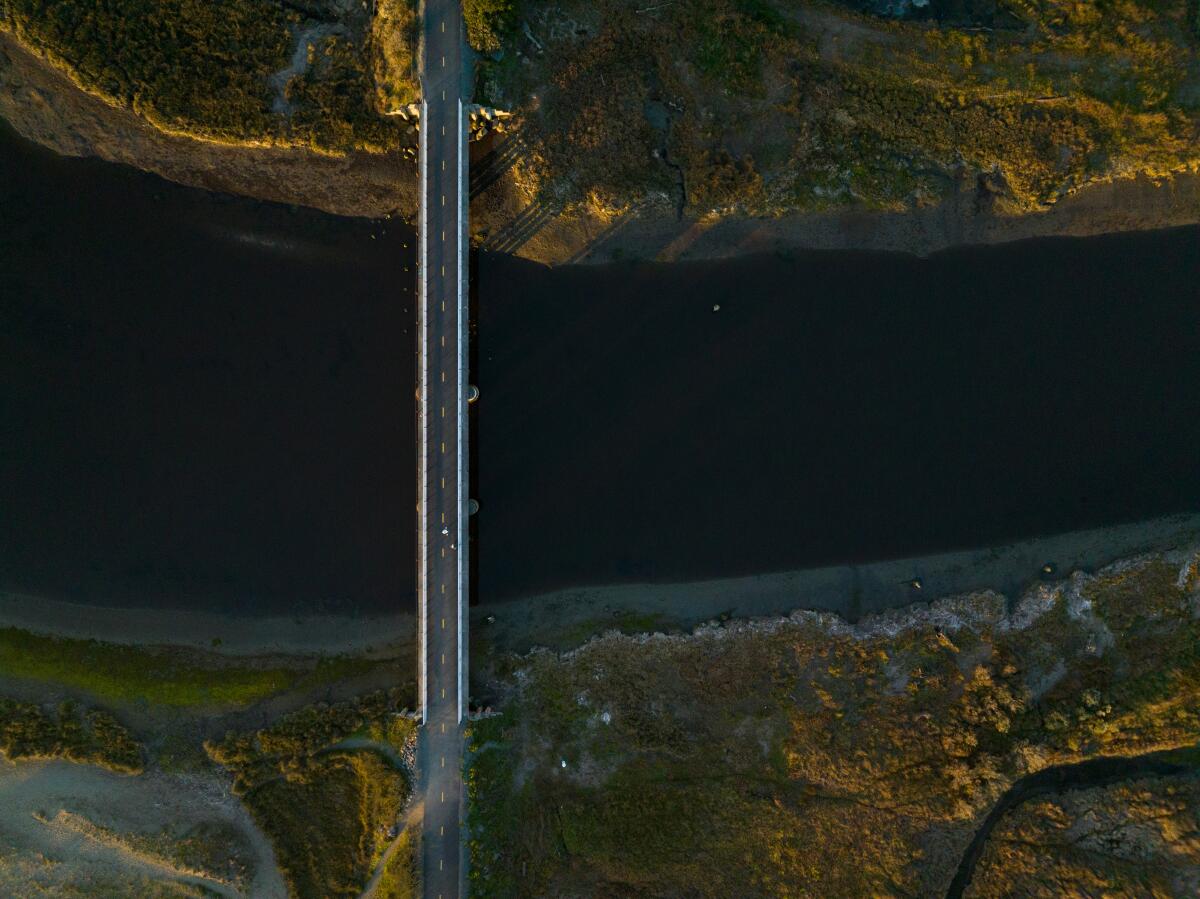
At least one group of Native Americans has asked to have more of a say in the construction of the Great Redwood Trail.
(Great Redwood Trail Agency)
Madrone, the Humboldt County supervisor, said tribes in the Eel River Canyon have expressed significant anxiety about how the trail could affect their cultural resources and sacred sites. In January, the Ukiah Daily Journal reported that a group of Wailaki descendants and their allies, calling themselves the Kinest'e Community Coalition, demanded they be given a more prominent seat at the table.
There are discussions about possible tribal co-management of areas of the trail, Madrone said, adding that there are promising examples of successful partnerships in other areas the line passes through, such as Humboldt County.
“There's a lot of concern on the part of tribes, and rightly so, about what this all means,” Madrone said. “So we have work ahead of us to really build really strong partnerships.”
The public comment period on the master plan runs through June 3. Next steps include initiating a process to obtain an environmental permit for the entire master plan. Individual projects may need additional environmental review, but Madrone said having a broader permit should speed things up and reduce costs.

